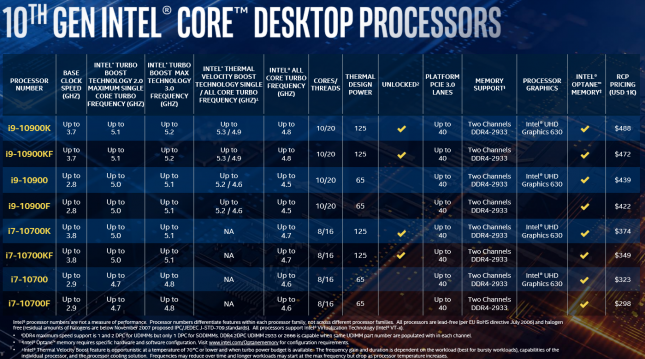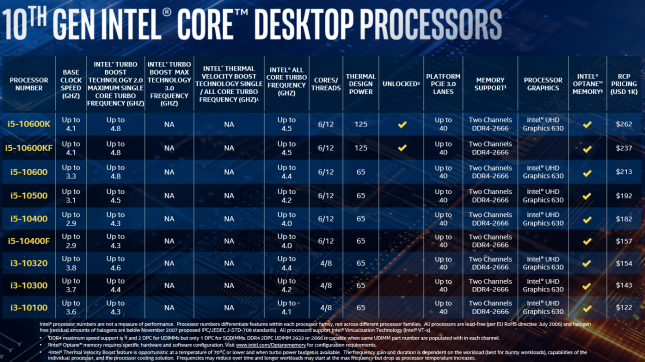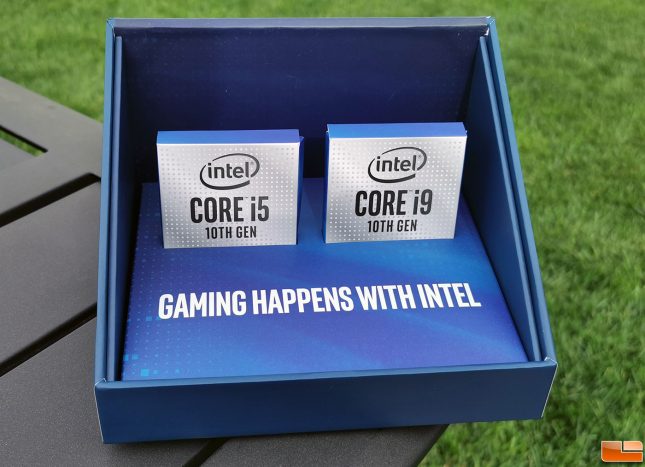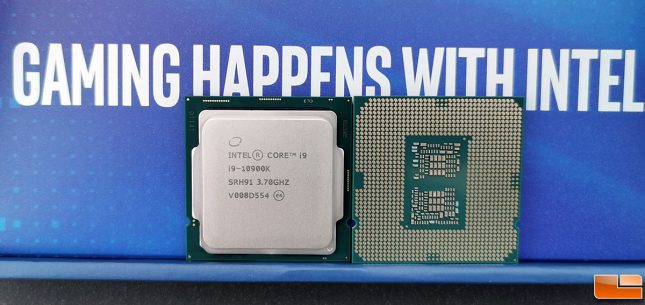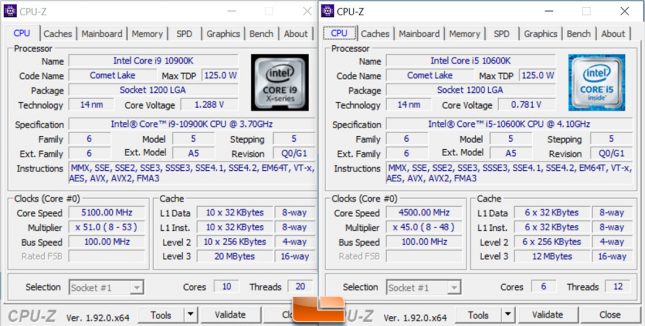Intel Core i9-10900K and Core i5-10600K CPU Review
Comet Lake-S – More Cores and Hyper-Threading For All
We’ve been talking about Intel’s 10th Gen Core series of processors for a numbers of weeks. Our initial coverage gave you the basics of the new Comet Lake-S architecture used on the 10th Gen processors. It also covered how Intel has moved to Socket LGA1200, so you’ll need a new motherboard using an Intel 400 series chipset. We already covered the ASUS ROG MAXIMUS XII Hero (Wi-Fi) motherboard last month and that just happens to be the Intel Z490 chipset we picked to use for the launch article of the new Intel High End Desktop (HEDT) processors.
Intel released more than a dozen processors today, but picked two models to send out to reviewers. The first is the flagship Intel Core i9-10900K 10-core, 20-thread CPU and the second being the Intel Core i5-10600K 6-core, 12-thread processor that is aimed at more of the mid-range. All of the new Comet Lake-S processors are manufactured on Intel’s 14nm++ process with the latest refinements. Intel has managed to get higher clock frequencies for this generation and attributes that to partly using a thinner die and a thicker integrated heat spreader. Intel has also given overclockers more features to play with as you can now disable hyper-threading on a per core basis and the voltage curve can now be adjusted.
The Intel Core i9-10900K is priced at $499 and features a 3.70 GHz base clock with a 5.1 GHz boost clock. That said the 10900K is capable of reaching 5.2 GHz with Turbo Boost 3.0 and it can reach up to 5.3 GHz with Intel Thermal Velocity Boost if the situation is ideal. When it comes to cache size, the 10900K has 20MB of Intel Smart L3 cache that is 16-way associative, 256K of L2 cache per core and 64K (total) of L1 cache per core.
The Intel Core i5-10600K 6-core, 12-thread processor is priced at a more affordable $262 and features a 4.1 GHz base clock and 4.8 GHz boost clock. It does not feature Turbo Boost 3.0 or Intel Thermal Velocity Boost technologies. It has 12MB of Intel Smart L2 cache that is 16-way associative, 256K of L2 cache per core and 64K (total) of L1 cache per core.
Neither processor supports PCIe 4.0, so there is no official support for PCI Express 4.0 lanes on any Intel Z490 motherboards as a result. Motherboard makers have said that upcoming Intel 11th Gen Core ‘Rocket Lake’ processors will work on Intel Z490 boards and will likely be the first Intel CPU to support PCIe 4.0. So, Intel is lacking PCIe 4.0 support on the CPU side for the time being despite the fact that many of the boards could support the technology.
Here is a look at CPU-Z on both the Intel Core i9-10900K and the Intel Core i5-10600K.
On to the benchmarks!

